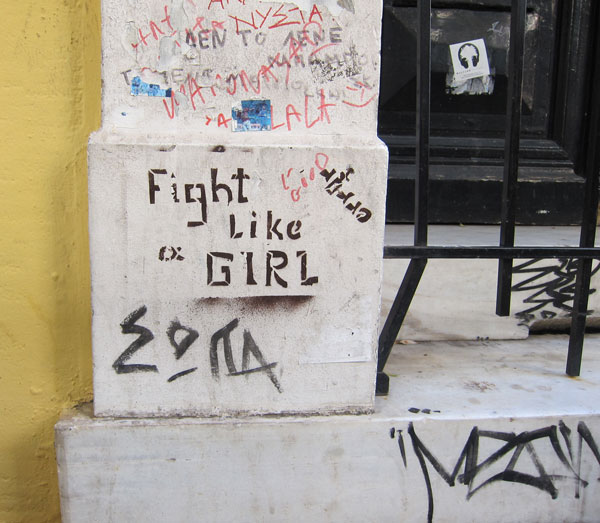Turning to the recent disdain within some narrations of queer feminism for interpretation and paranoid critique in favour of a ‘newer’ reparative turn, Robyn Wiegman asks the right question; “what precisely motivates the widespread embrace of reparative reading for queer feminist readers [listeners] today?” (Wiegman 2014: 12). For within this debate, as Wiegman astutely points out, it was necessary for Eve Sedgwick to critique Butlerian theory as a means to develop her own ideas. Paradoxically, Sedgwick had to use the tools of critique and interpretation to develop her own theory as critical of what she perceived as the predominance of interpretation as the only means by which knowledge may be produced. What this points to is the destabilisation of queer feminism’s own implicit progress narrative. For an intact political program has not been neatly handed down from one generation to another, neither in feminist musicology, ethnomusicology, historical feminist theory, critical race feminism, intersectionality, gender, post-colonial studies or queer theory. A belief in a ‘natural’ progression from paranoid to reparative critique as queer feminist progress has the propensity to elide the ongoing need for both forms of critique (at least) and ongoing and often escalating discriminations faced in the historical present.
One of the motivating factors of “the widespread embrace of reparative reading”, according to Wiegman, is an often unacknowledged need “to repair damaging versions of the self” wrought by a critical reception of interpretation as too focused upon the researcher than the researched. Within this paradigm, “whole generations of critics abandoned the love of their objects, turning away from the artefacts of culture in both their formal density and their social complexity to luxuriate in the superiority of their own authorship” (Wiegman 2014: 17-18). Wiegman explains that, as a result, the reparative position has been defined as “a decided critical good, celebrating… its impulse ‘to assemble and confer plenitude on an object that will then have resources to offer to an inchoate self’” (Sedgwick 2003: 149 quoted in Wiegman 2014: 17). But, and importantly in a way that echoes Lauren Berlant’s assessment of the current pain of detaching from the fantasy of the ‘good life’ (Berlant 2011), Wiegman clarifies; “the pledge to the good is never simply what we want it to stand for, in part because the ‘inchoate self’ at risk in this scenario is the critic herself” (Wiegman 2014: 17).
At the very least, this means that the current celebration of reparative reading as a form of intimacy, if not love of and for the object of study, must be understood – against its burgeoning reputation – as making rather significant demands on the object, not against the authority and security of the critic but on her behalf (Wiegman 2014: 17-18 emphasis added).
For Wiegman asks, what might it mean “to confer love on an object as a tactical strategy in rescuing one’s self from condemnation” (Wiegman 2014: 12)? Indeed, such a new materialism with a refocused interest upon the object of study, yet which is implicitly based upon a paradoxical deferral of the self, may be appreciated as one that actually seeks to repair the self through a renewed focus upon the object, projecting, coercing, forcing love upon the object as a repair of the self. In my opinion, this has the propensity to read as yet another form of projection and transferal, yet with a dangerous dose of denial that renders the critic relatively unmarked, yet again.
When it comes to the matter of the critic’s investment in herself, then, the widely heralded distinction between paranoid and reparative reading is not one, as both practices are engaged in producing, confirming, and sustaining critical practice as a necessary agency, no matter the different object relations and analytic itineraries that govern each. In this broader context, the defining characteristic of queer feminist criticism – its heralded refusal of the critic’s authority in the name of an interpretative practice born in an ethical embrace of the object’s need – may be important for what it most shares with paranoid reading: an emphatic and instead empathetic attachment to interpretation as a self and world enhancing necessity (Wiegman 2014: 18-19 emphasis in original).
The seeming choice between paranoid or reparative critique echoes critiques of both historical feminist and critical race methodologies in which one must choose either separation or integration, exceptionalism or assimilation, either sameness or difference, and thus either paranoia or repair. Ellen Koskoff’s assertion that “finding a balance between these tensions will, no doubt, be the challenge of the future” is then the historical present that Feminist Frequencies finds itself within (Koskoff 2005: 98). Balance, I want to suggest, might be more ‘productively’ considered through the notion of paradox. Attaching and detaching, accepting and refusing, identifying and dis-identifying, contesting and converging, these are the patterns that repeat throughout feminism’s long, multi-faceted and uneasy story, and as Joan W. Scott asserts, are the necessary paradoxical conditions for change (Scott 1996: 3-4).
The methodology of Feminist Frequencies then is one that establishes and identifies the dominant structures and representations by which a particular milieu has been governed and by which hegemonic identities have been materialised. Dominant structures are then destabilised through processes of repetition. The tensions that arise from such destabilisations are disorganised through the production of collective memory as one that re-works the negative affects of the erasures of history through alternative temporalities for the materialisation of historical presents based upon a past that will have been. The following analyses represent my own working through of this methodology, in the process of doing it, of working it out through writing as an aesthetic practice engaged in the interpretation and repair of sound arts and experimental music practices as a practice of feminist composition. This in itself, is my attempt at an always social writing/living/sounding of feminist composition of, for and in the historical present.
